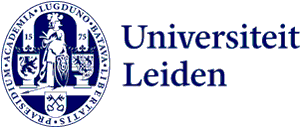
Leiden researchers join forces against tuberculosis
About one and a half million people worldwide die each year from tuberculosis. For thirty years, therapy with antibiotics has been the same, while it takes far too long and can lead to resistant pathogens. Leiden researchers from four institutes are now joining forces to develop more effective and efficient therapies against tuberculosis.
Researchers from IBL (Institute of Biology Leiden), LACDR (Leiden Academic Center for Drug Research), LIC (Leiden Institute of Chemistry), and LUMC (Leiden University Medical Center) started working together in the Leiden interdisciplinary Tuberculosis Consortium (LiTBC) to tackle the problem. They are not only working on a more detailed understanding of molecular processes related to the progression of tuberculosis, but also aim to establish novel therapeutic and diagnostic approaches. Those are either based on novel more effective antibiotics, nanomedicines or therapies that boost self-defense mechanism of infected cells, for example host directed therapeutics and vaccination.
Deadliest bacterial infectious agent worldwide
Since approximately a quarter of the world's population is infected with Mycobacterium tuberculosis (Mtb), tuberculosis (TB) therapy remains a major global challenge for public health. Although the progression from latent toward acute TB is prevented in most patients by host immune responses, an estimated 10 million new acute disease cases and approximately 1.5 million deaths occur every year. Therefore, Mtb is the deadliest bacterial infectious agent worldwide and TB is one of the top-10 leading causes of deaths globally.
Therapy is too demanding and leads to resistant bacteria
First-line TB therapy is based on the combination of four antibiotics for a period of 6-9 months for drug susceptible TB. However, people with multidrug resistant TB need to use up to six drugs for even 12-24 months. Due to these demanding regimens and side effects, TB therapy suffers from poor patient compliance, which further promotes the rise of drug resistant bacterial strains.
The understanding has improved, but therapy has hardly changed
Although the understanding of TB has improved substantially, therapy has hardly changed over the last thirty years and a broadly effective drug or vaccine is still not available for patients around the world. Within the Consortium researchers aim to develop novel techniques for early-stage diagnosis, for example lateral flow based assays, that work just like the well-known quick Covid self tests.

More potent antibiotics, innovative vaccines and nanomedicines
Besides diagnosis, the consortium has a strong focus on the identification of novel drug targets, the development of therapeutics, such as more potent antibiotics, which reduce the risk of resistance formation, and host directed therapeutics as well as the development of innovative vaccines.
Together partners aim to improve the self-defense mechanisms of our body and achieve a better understanding of TB related immune responses. Moreover, the consortium aims to apply nanomedicines to improve therapeutic efficacy while reducing adverse effects of antibiotics and host directed therapeutics, which are currently limiting their efficient use in tuberculosis therapy.
World Tuberculosis Day: 24 March
On March 24, 1882, the German medicus Robert Koch announced that he had discovered the tuberculosis-causing bacterium Mycobacterium tuberculosis. In 1905 he was awarded the Nobel Prize in Medicine for this groundbreaking discovery. One hundred years later, March 24 was declared World Tuberculosis Day, intended to raise awareness of the global TB epidemic and its control.
